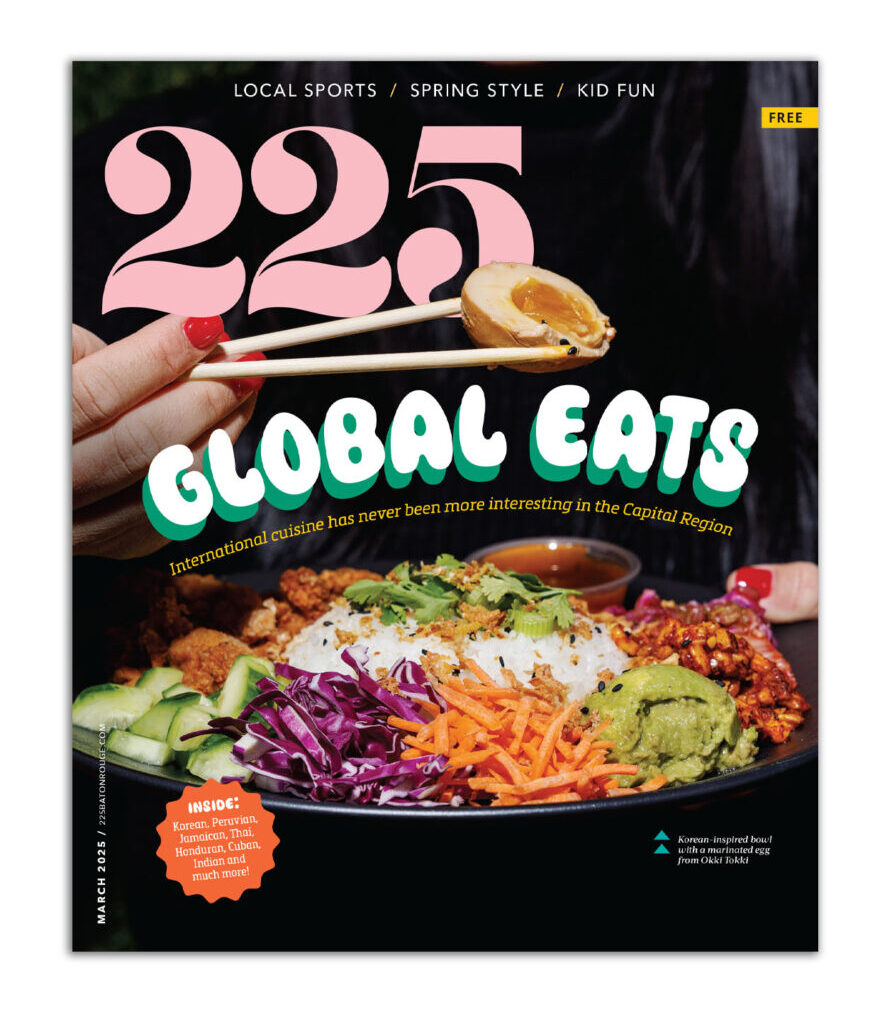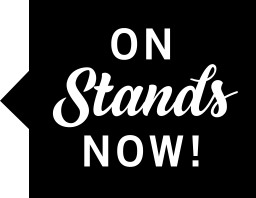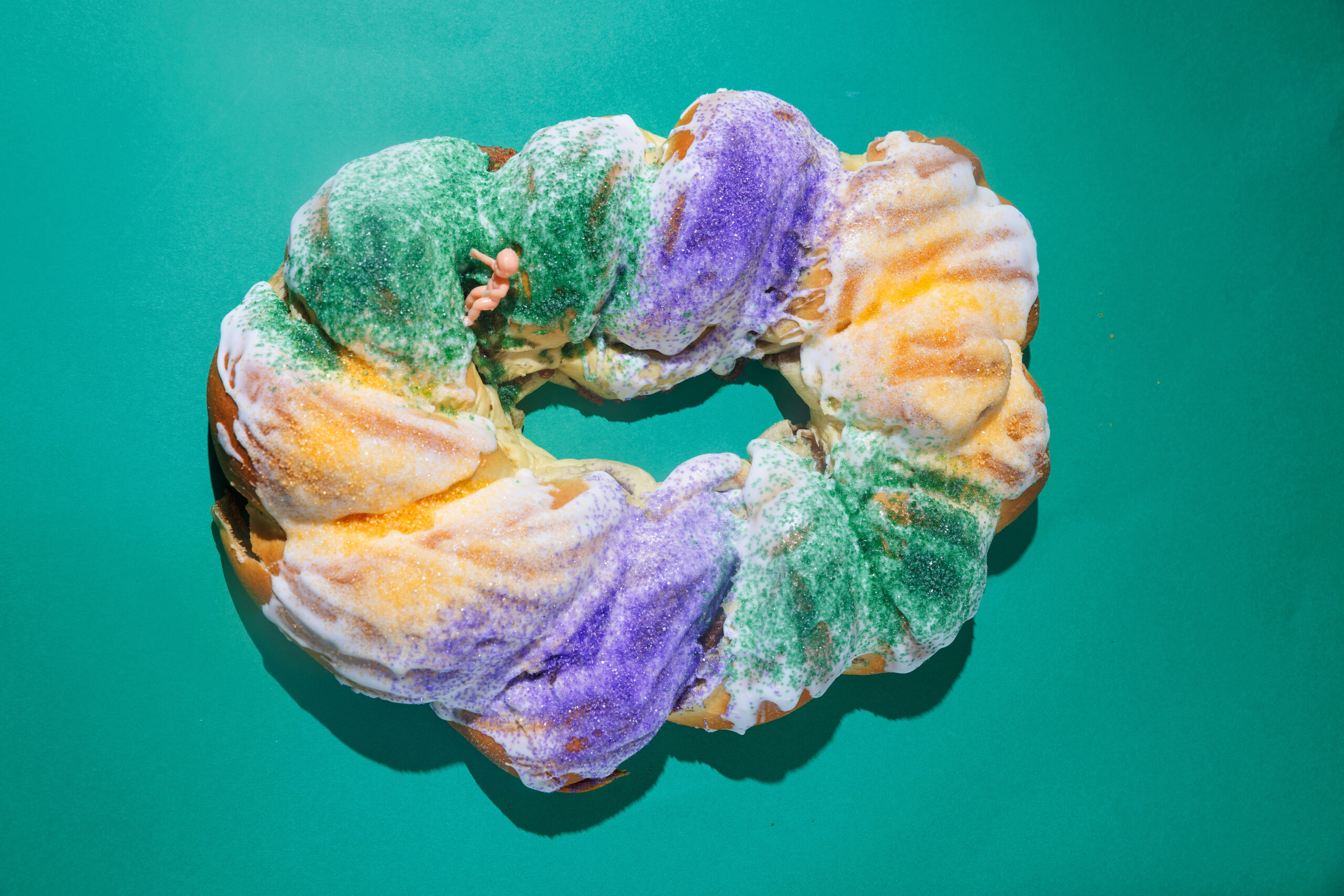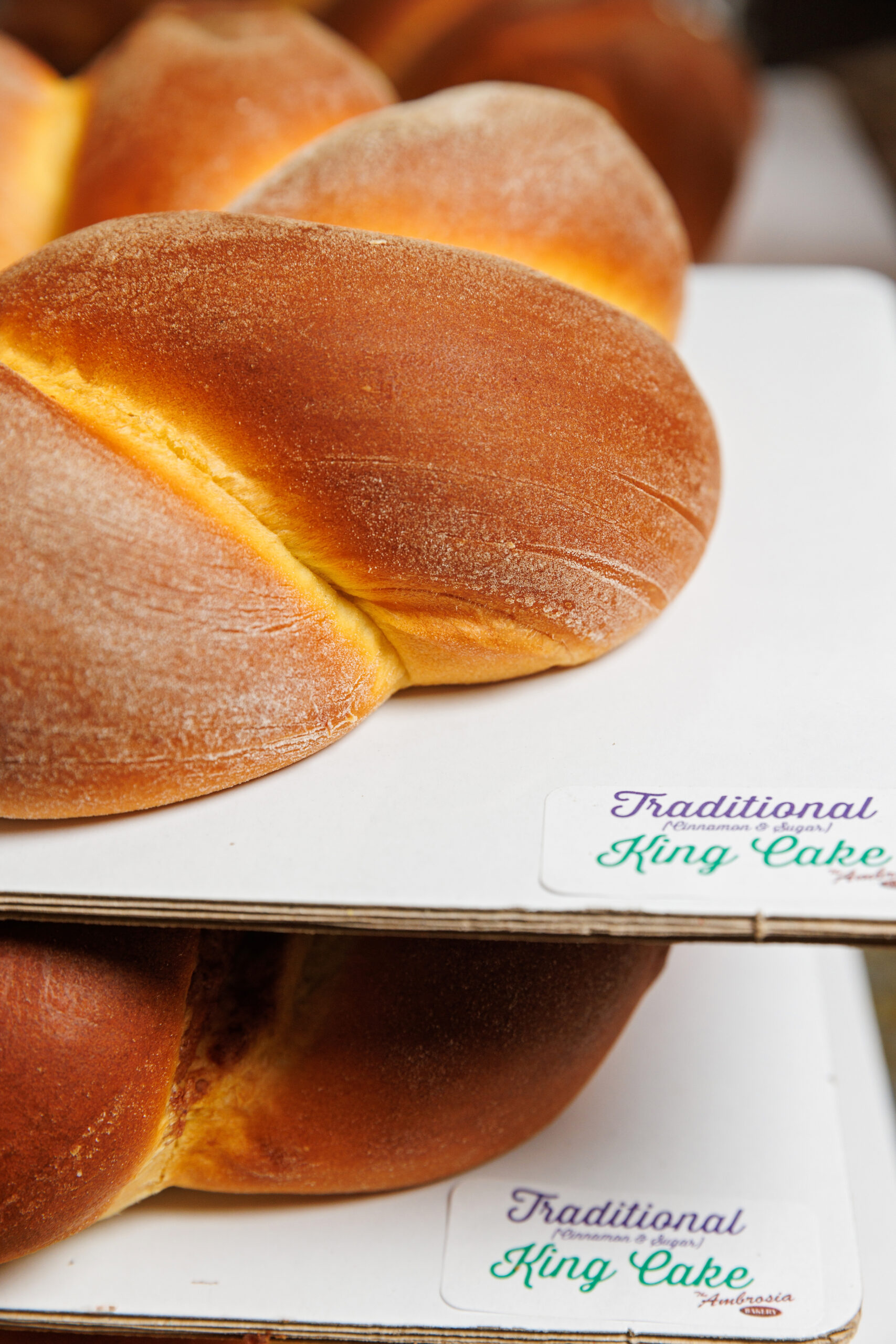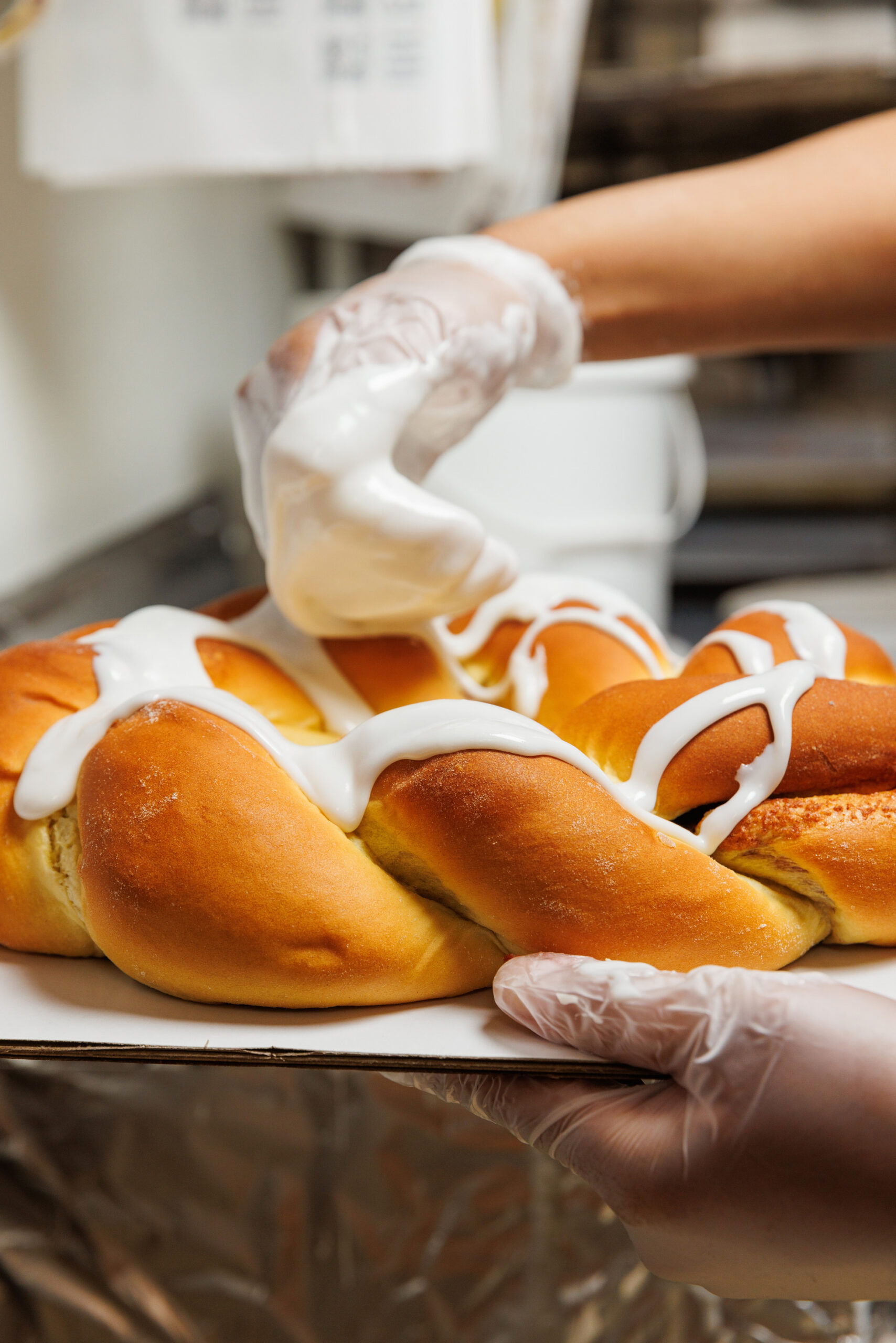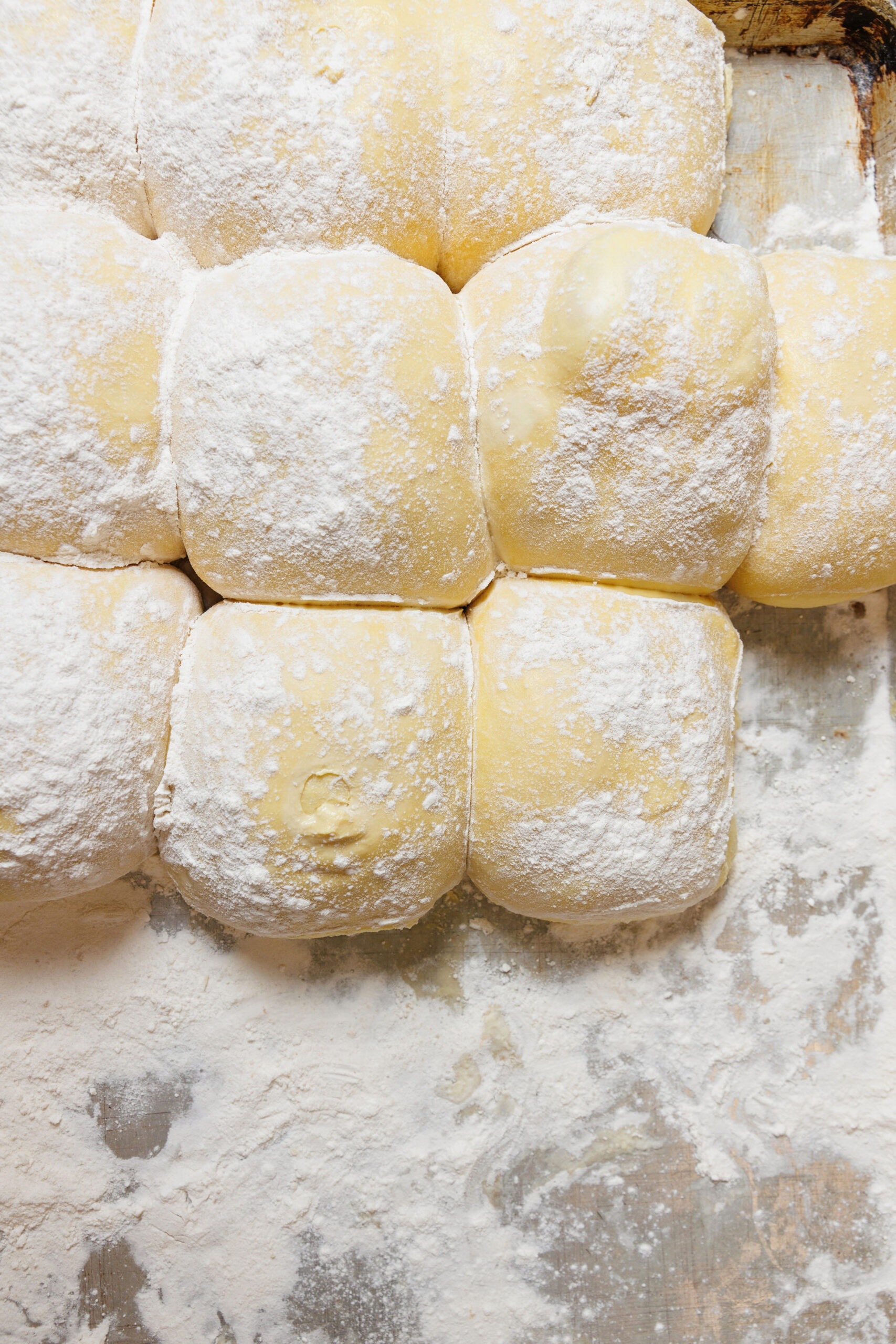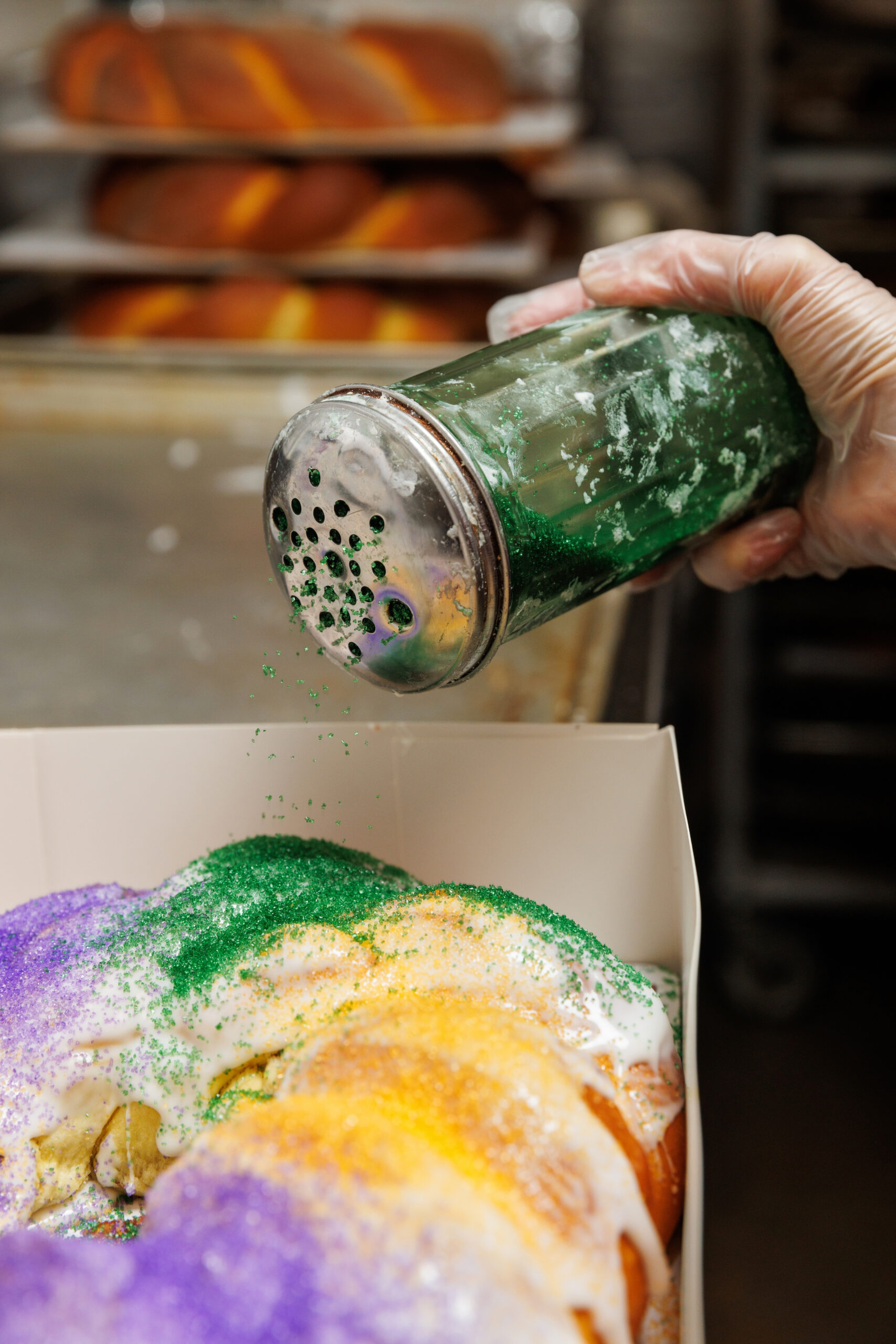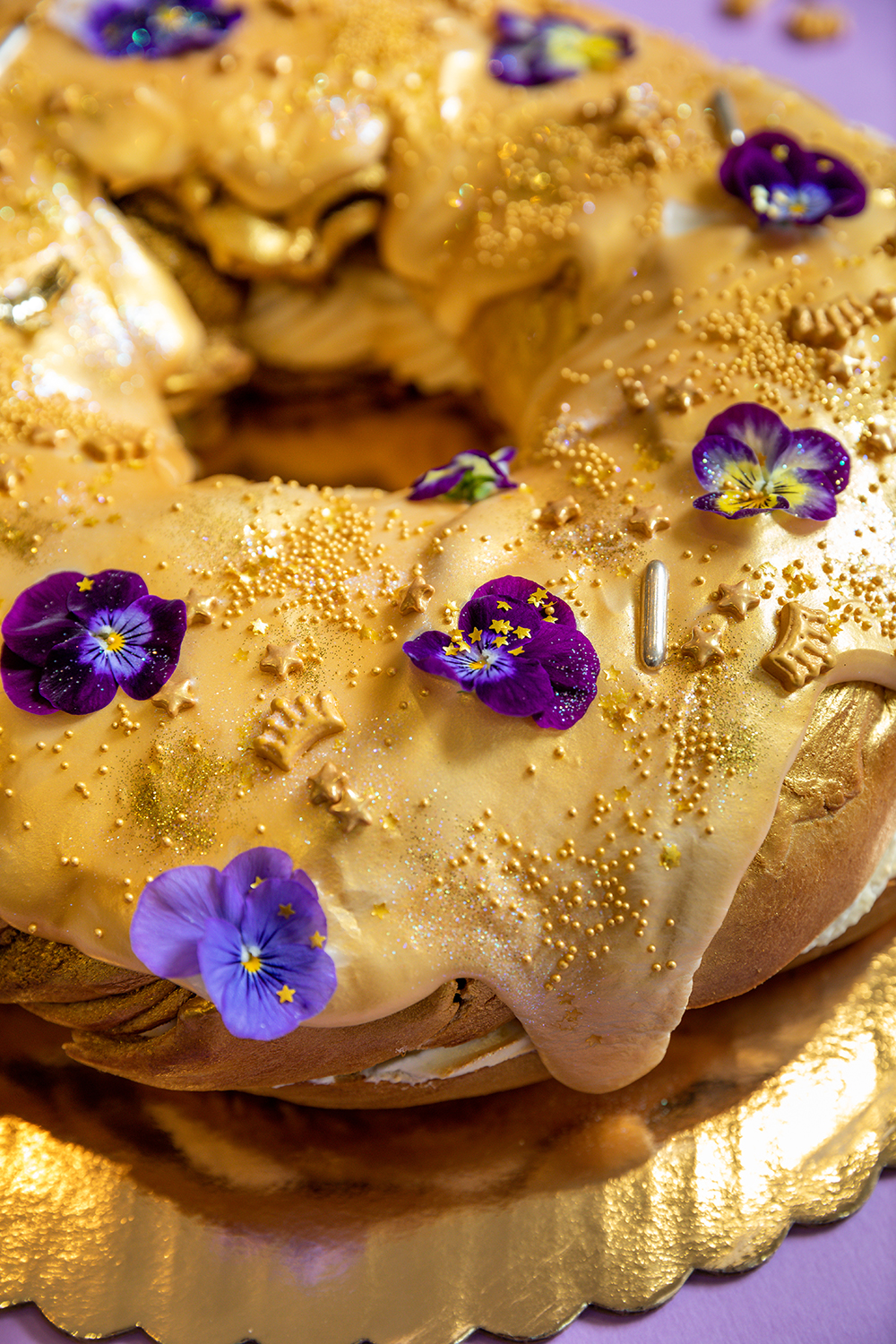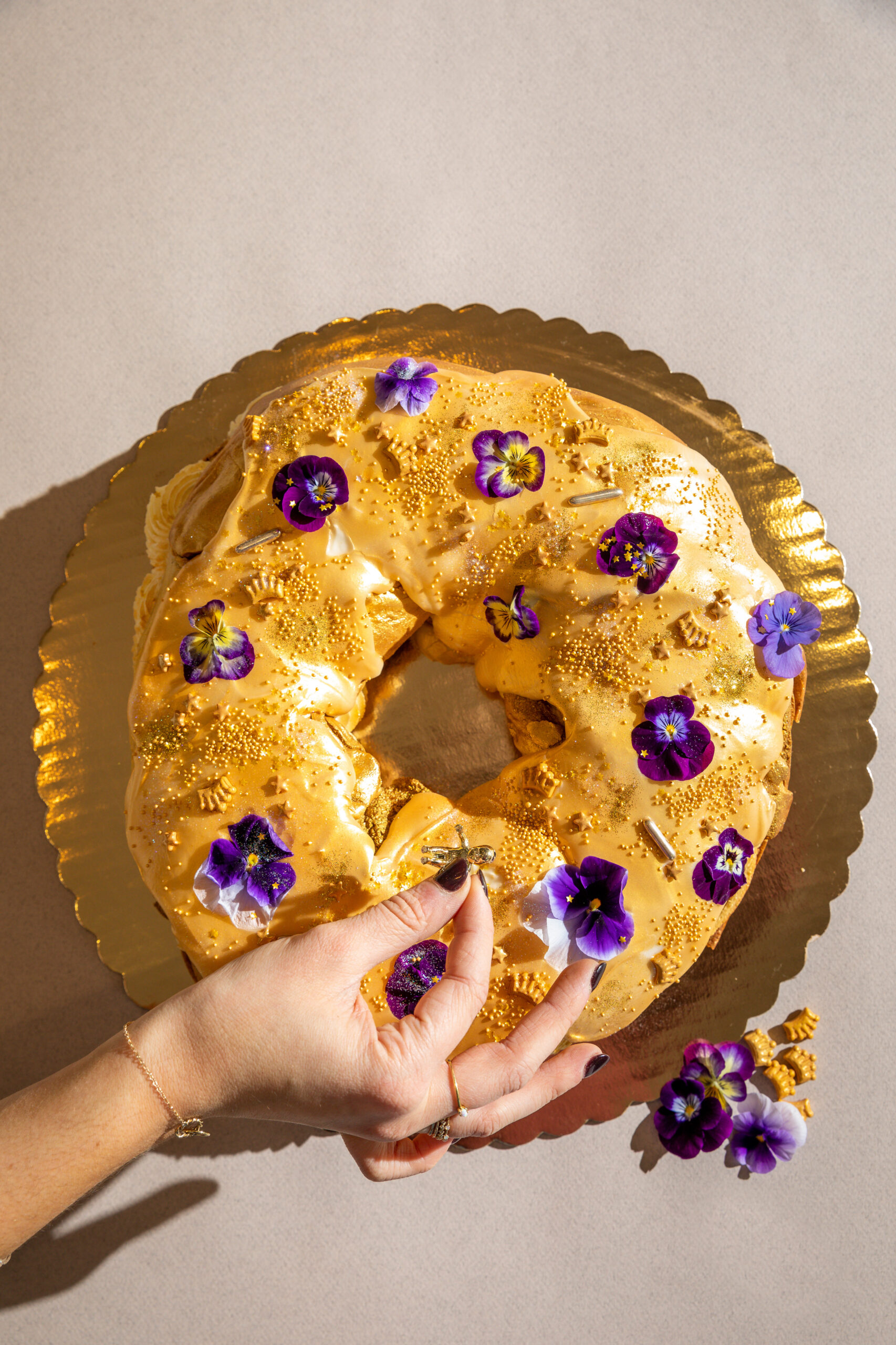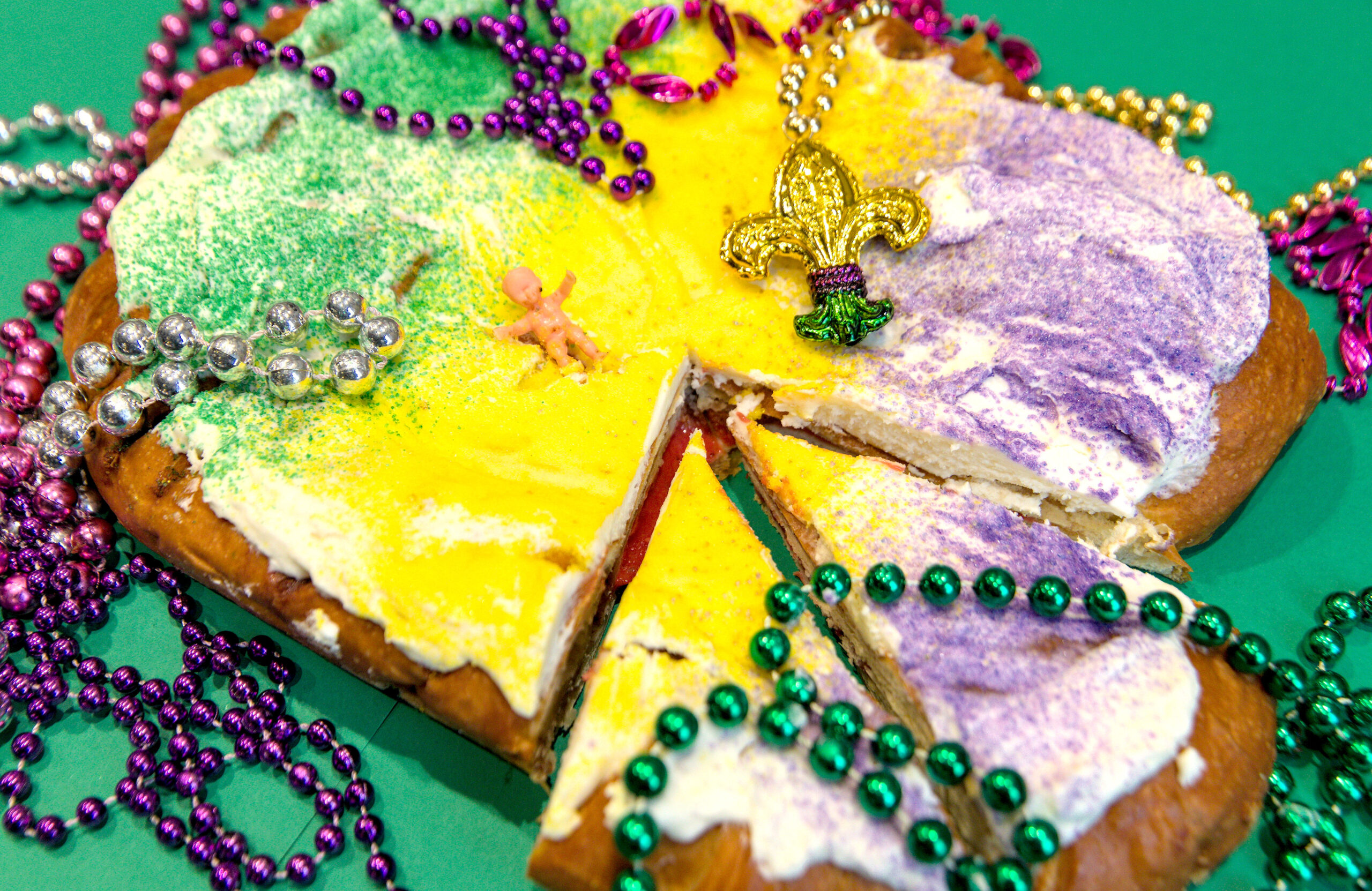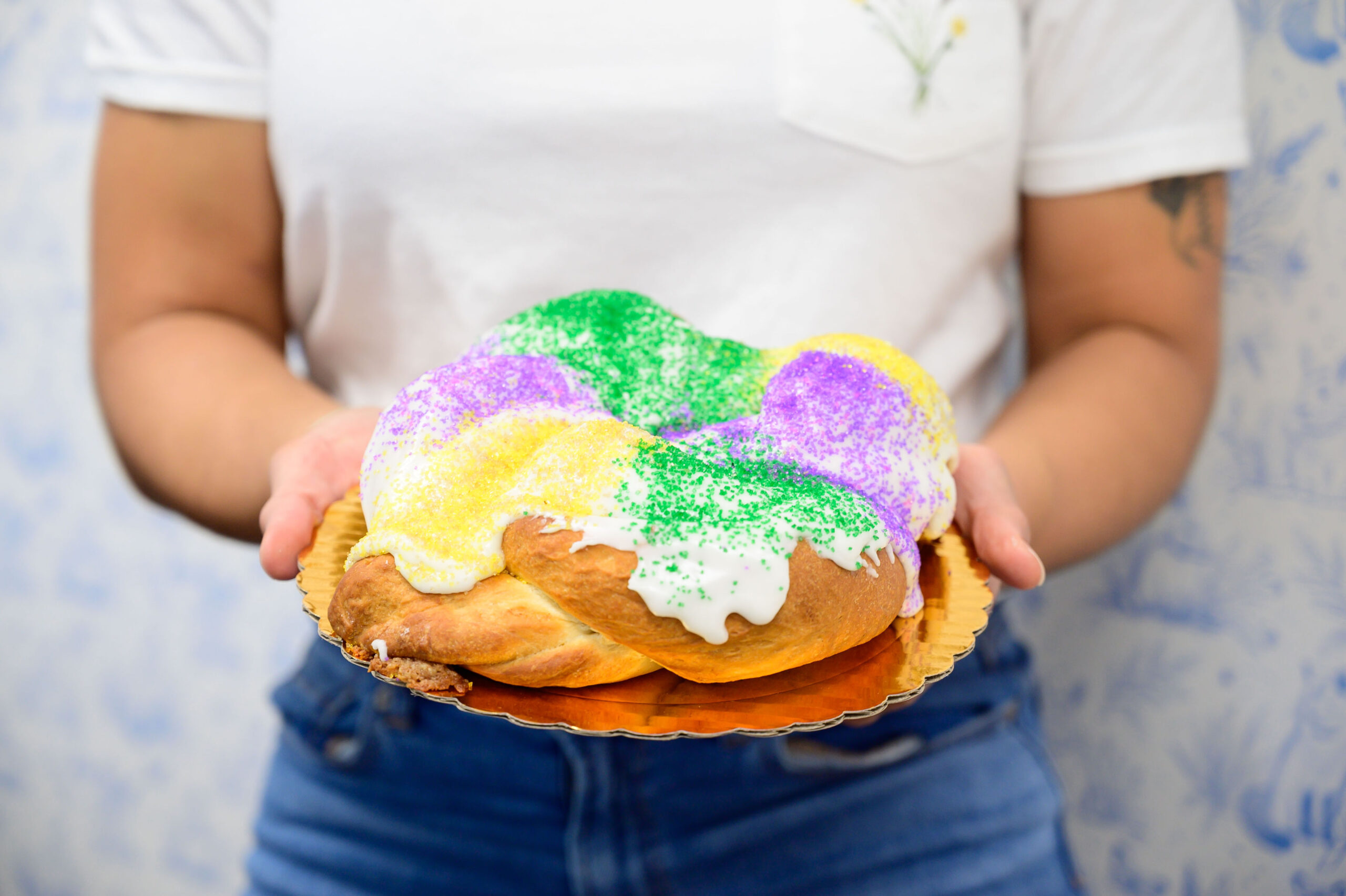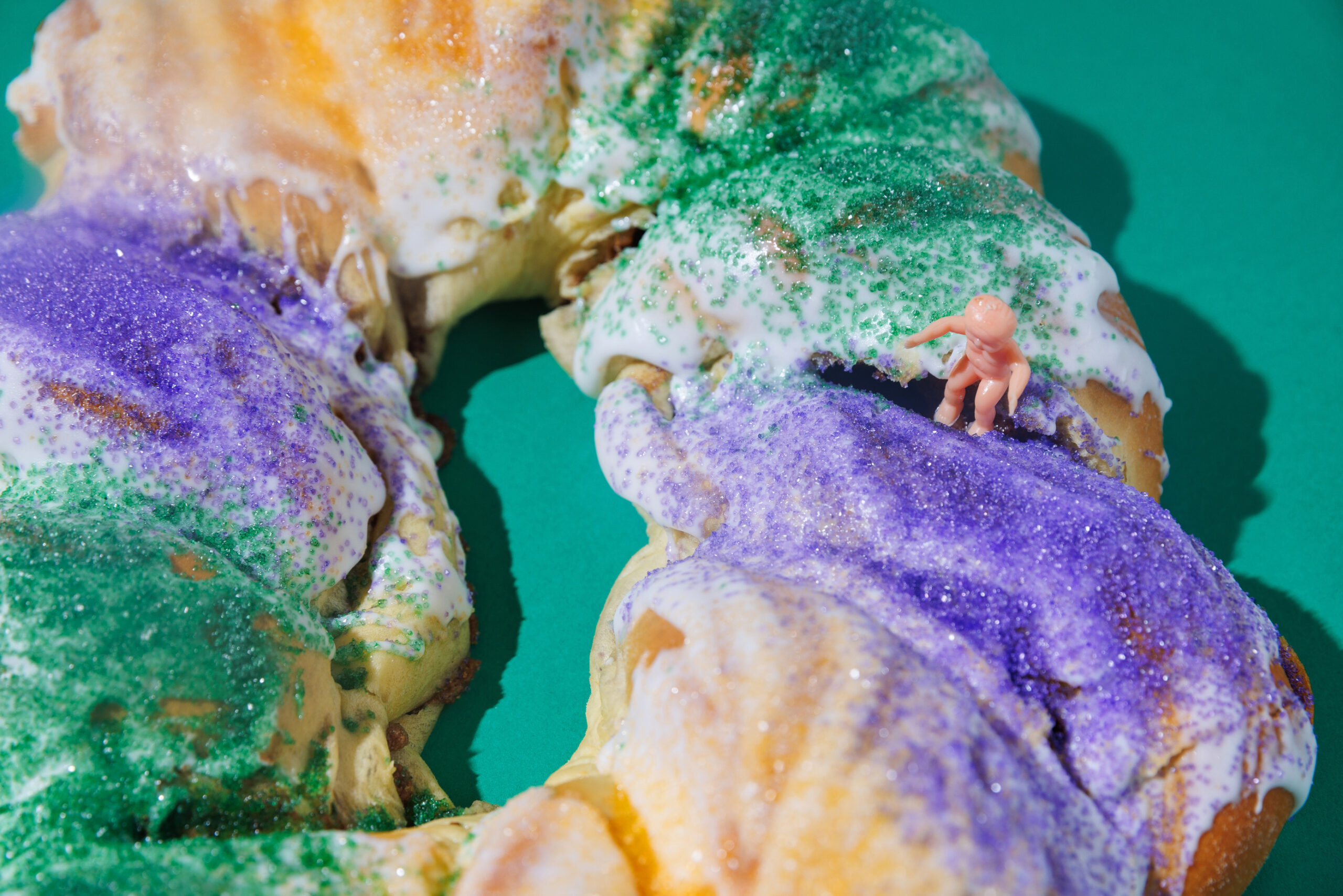One of the biggest upsides to a lengthy Carnival season like this year’s is the extra time it affords for sampling the ever-growing variety of king cakes. Made famous in New Orleans and once flavored only with cinnamon, king cakes are now sold in every corner of Louisiana (and beyond) in countless interpretations.
It’s no surprise. Rooted in the Roman tradition of Saturnalia, king cakes have been shape-shifting for millennia.
Their continued evolution in Baton Rouge is just part of their story. It’s fair to say the Red Stick was once a Carnival wasteland. But that slowly started to change around the mid-’70s, when the city’s longest running parade, Krewe Mystique de la Capitale, was born. By the 1980s, two of the city’s biggest parades had arrived, with Spanish Town in 1981 and Southdowns in 1987.
|
|
|
Parades invited king cakes. Toward the end of the decade, king cakes emerged as area bakeries started seeing their commercial viability, says Gambino’s Bakery – Baton Rouge manager Angella St. Romain, a baking industry veteran since the ’70s.
In the late ’80s, she was working at a small bakery in Breaux Bridge when she attended a king cake workshop hosted by a trade organization at now-closed Baum’s Fine Pastries in Baton Rouge.
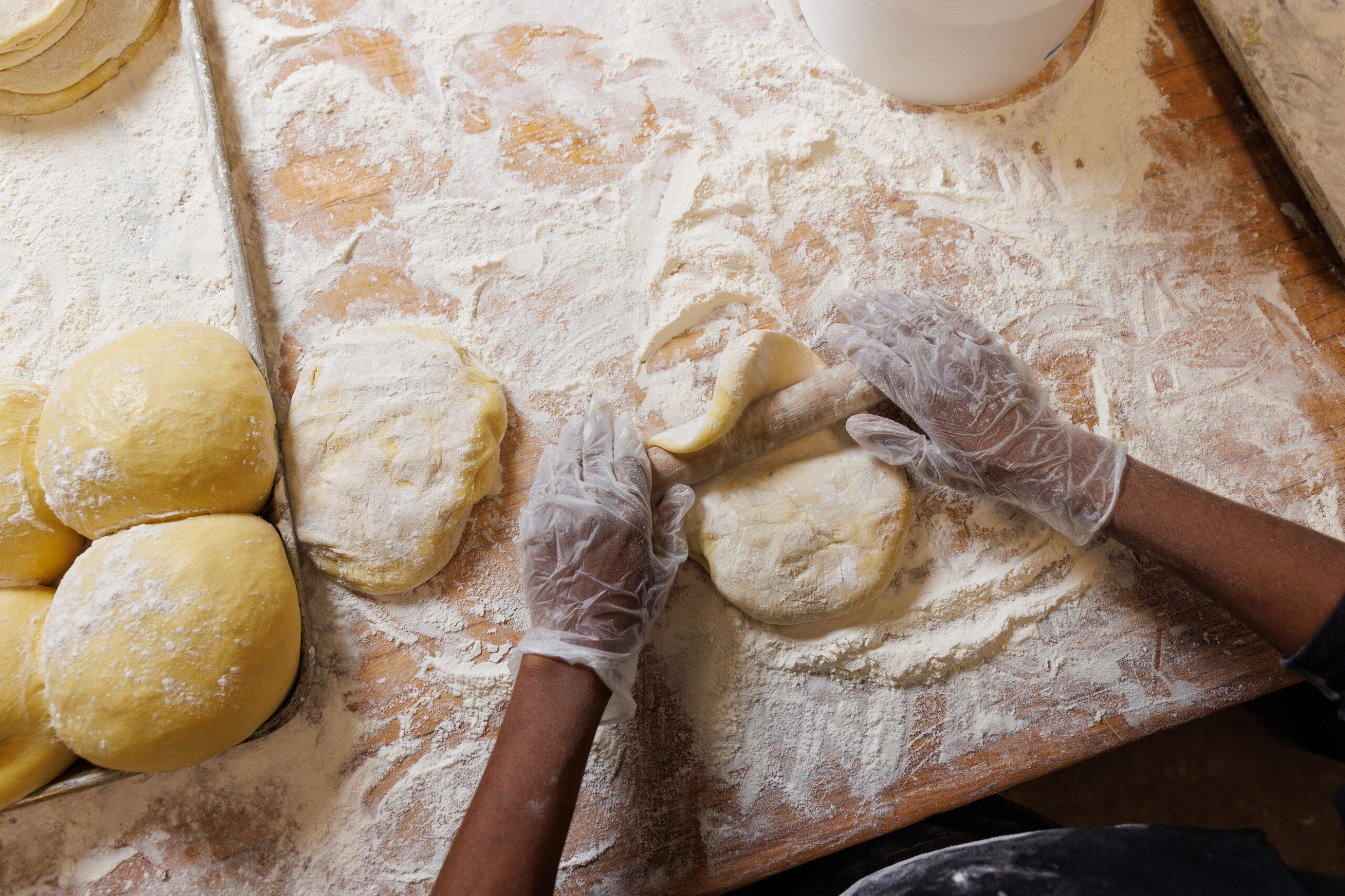
“At the time, no one was selling king cakes outside of New Orleans,” she says. “I remember bringing the idea back to my owner, and she said, ‘Nobody’s going to buy king cakes.’”
St. Romain pursued it anyway—and sold nearly 200 that year.
It was a sign of things to come. Around the same time, New Orleans-based Gambino’s decided to open a Baton Rouge location. (St. Romain would go to work for it in 2002.) Owner Sam Scelfo began looking at expanding the store’s famed king cakes into Baton Rouge, where the pastry wasn’t yet widely consumed.
“I remember Sam saying, ‘This market is wide open,’” St. Romain says. “He saw an opportunity. … It really took off.”
By the late ’80s, Gambino’s was selling large numbers of king cakes in Baton Rouge.
In December 1993, native New Orleanians Felix and Cheryl Sherman opened The Ambrosia Bakery. They rolled out king cakes in January 1994, says their son, Felix Sherman Jr., who operates the store today.
The seasonal business has become a key component of the bakery’s identity. Ambrosia expects to sell 20,000 king cakes this year. Traditional, strawberry cream cheese and a recent upstart, Bavarian cream, are top sellers. So is Ambrosia’s signature Zulu King Cake, introduced in the late ’90s with a formula of coconut, cream cheese and chocolate.
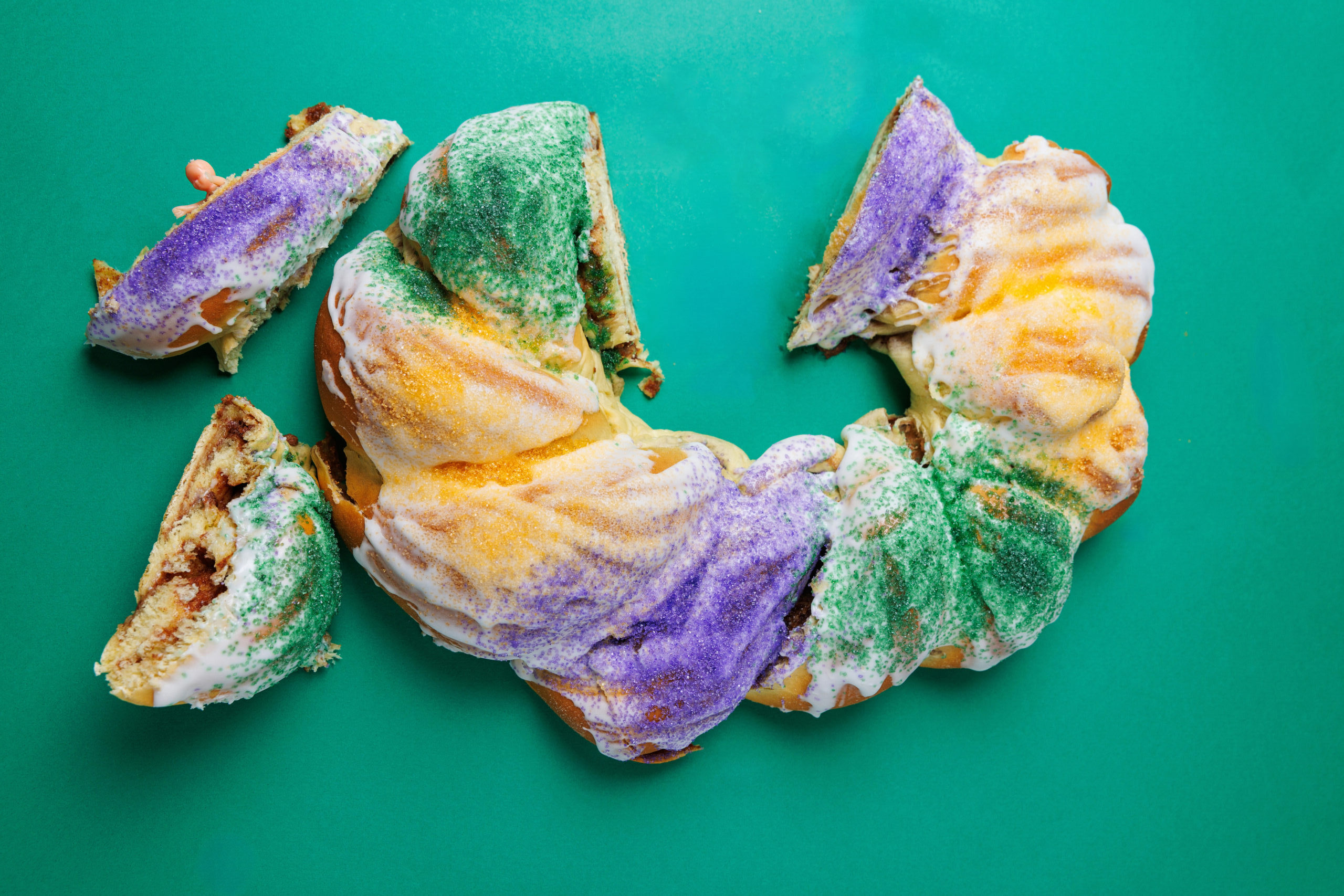
Businesses like Gambino’s and Ambrosia still occupy a big part of the Capital Region king cake universe, but these days, they have a lot more competition.
Nearly every grocery store in town sells king cakes. Smaller specialty bakeries like CounterspaceBR and Eloise Market and Cakery have become known for their originality, while bougie caterer Gourmet Girls turns out high-end king and queen cakes with intricate details.
The evolution continues with artisan bakers like Yaya’s Blooms & Dough, Mid City Bakery and Honey Bee Baking Co. elbowing in with small-batch formulas.
And the New Orleans migration lives on, with the arrival of famed Dong Phuong king cakes a few years ago at a handful of retailers like Sweet Society, Saigon Hong Kong Seafood Market, Pho Café, Bao Asian Market and A&J’s Coffee Bean.
“There are just so many places to buy king cakes these days,” St. Romain says. “It’s really grown.”
Origin story
1980s
King cakes migrate from the Crescent City to the Capital City. Gambino’s Bakery – Baton Rouge is one of the first in the area to sell them.
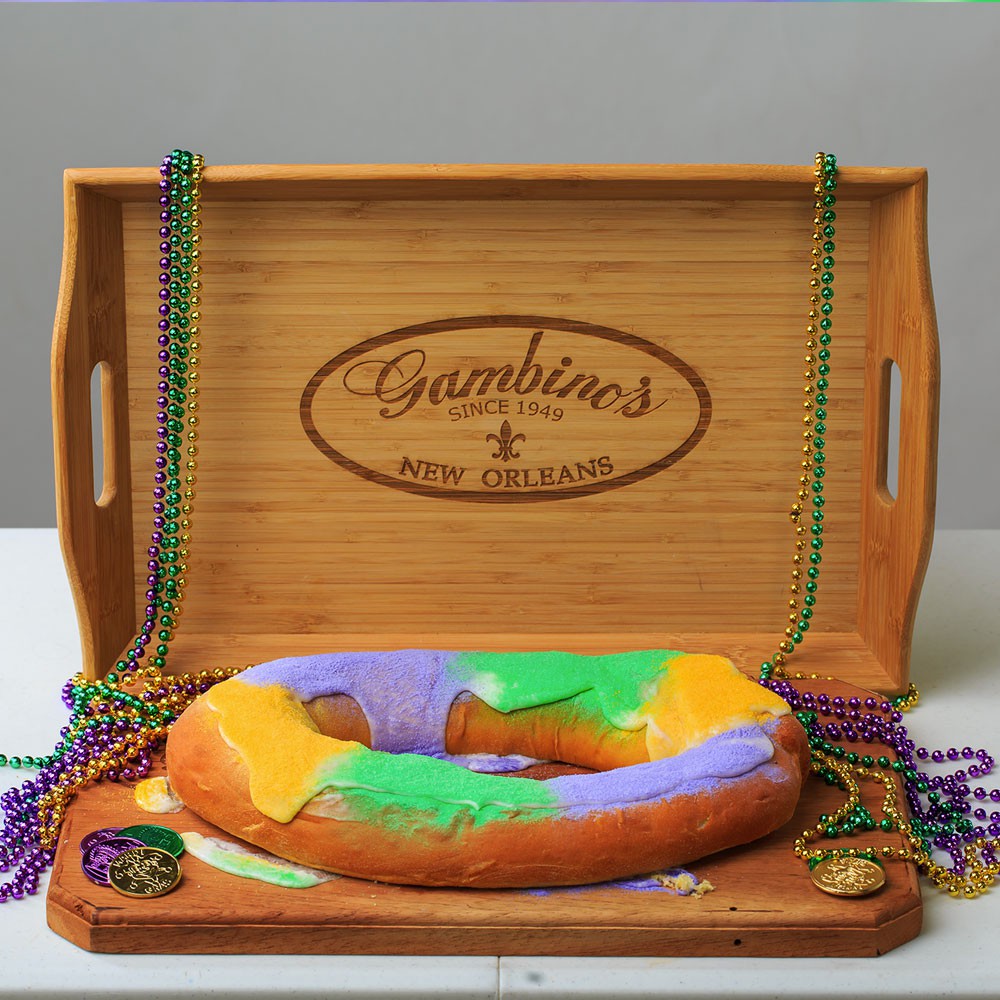
December 1993
The Ambrosia Bakery debuts in Baton Rouge and within weeks is celebrating its first Carnival season, marking the entrance of what remain some of the city’s most popular king cakes.
|
|
|
Late 1990s
The Ambrosia Bakery introduces its Zulu King Cake. Stuffed with cream cheese and frosted with rich chocolate and coconut shavings, the king cake is still popular today.
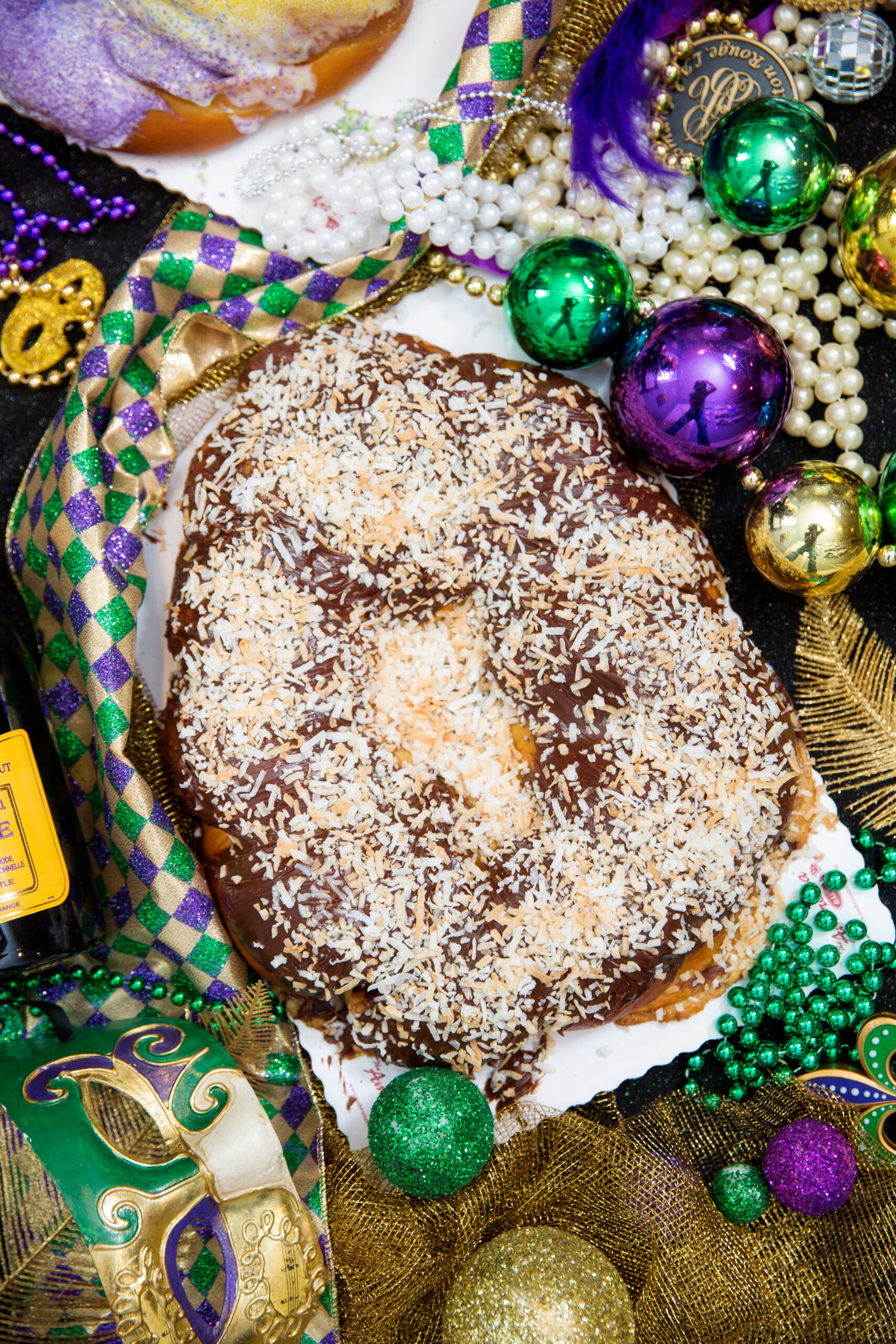
This article was originally published in the February 2025 issue of 225 Magazine.
